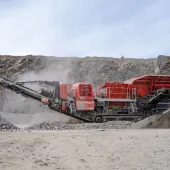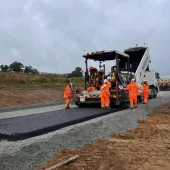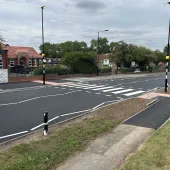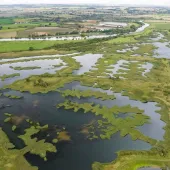
Archaeological finds at Hope cement works help shed more light on Roman military outpost
NEWLY uncovered remains of a Roman settlement close to the fort at Brough in the Hope Valley, Derbyshire, were showcased during a recent archaeological event.
Visitors were treated to an insight into military life in the Peak District National Park during Roman times when archaeologists shared findings from two months of excavations on land at Hope cement works, operated by Breedon.
The area was part of a Roman ‘vicus’, an adjoining settlement and workshops, outside the Roman fort at Brough – probably known to the Romans as Navio.
Hope Valley and the Peak District was important to the Romans as it was a vital source of lead metal, which was shipped all over the Empire for pipes, tanks and waterproofing, as well as a key strategic position at the heart of a Roman road network in the centre of Britain.
Archaeologists say the area was under Roman military rule as much of the land north of the Peak District remained hostile to Roman occupation; the fort at Brough was essential to maintain control of the lead trade, its processing and export.
The archaeological event was hosted by Archaeological Research Services Ltd who led the excavation, supported by a dedicated group of local volunteers, in partnership with the Peak District National Park Authority and a team from Breedon.
Among the discoveries were more than a thousand pottery fragments, carved stone fragments, coins and a Roman ‘ballista ball’ that would have been fired from a catapult. The team also found the remains of stone-founded and timber buildings and evidence of industrial activity, corroborating what is already known about the area’s lead-smelting heritage. All the artefacts have been recorded and removed for further analysis.
Reuben Thorpe, head of field investigations for Archaeological Research Services Ltd, said: ‘The Roman fort at Brough is a well-known ancient monument and the area has been the subject of several studies over the years. Less was known about this part of the vicus and we haven’t been disappointed.
‘We’ve found evidence from every era of the settlement, from what we believe was its earliest establishment in the late first century (when Roman governor of Britain, Cerealis, advanced into Brigantian territory) through to the fourth century, as well as post-Roman archaeology.
‘It has been a great opportunity to have been able to investigate this partially understood site thanks to the support of Breedon, as it has helped to paint a more complete picture of the military outpost at Brough and the relationship between a Roman fort and its adjoining settlement.’
Ed Cavanagh, works manager at Hope, said: ‘We know the land in and around our cement works has a fascinating industrial and mining heritage dating back to Roman times and earlier, and were pleased to work with the archaeologists to help discover more about this part of our site.
‘It’s also great that people were able to take part in the investigation and learn more about their local history.’
Natalie Ward, senior conservation archaeologist for the Peak District National Park Authority, said: ‘This is an important and exciting opportunity, afforded by the planning process, to investigate this significant site. The discoveries made by Archaeological Research Services and Breedon are allowing us to more fully understand the Roman influence on the Peak District landscape.’









